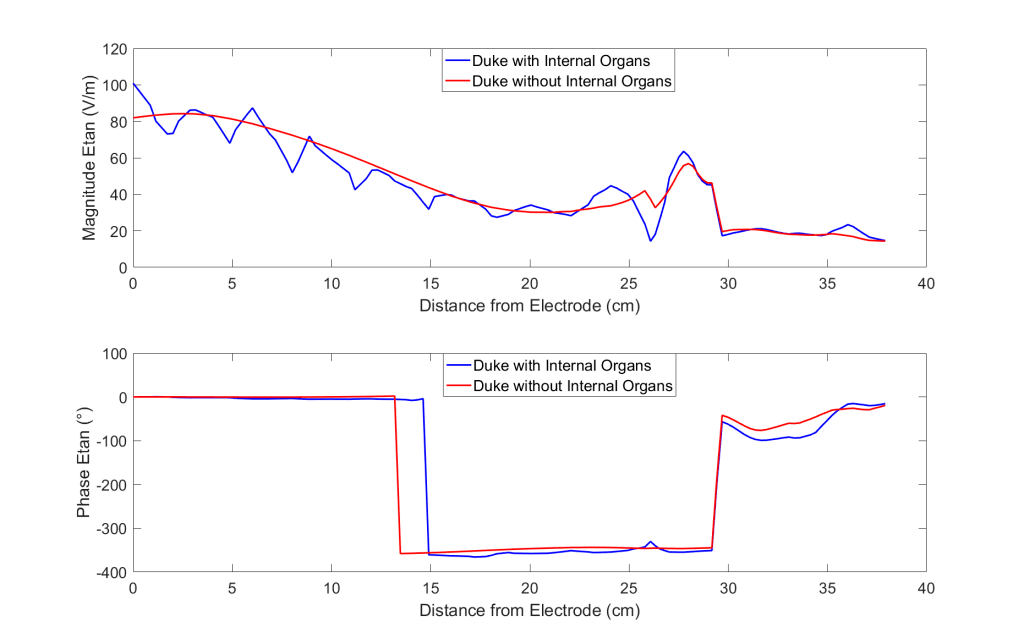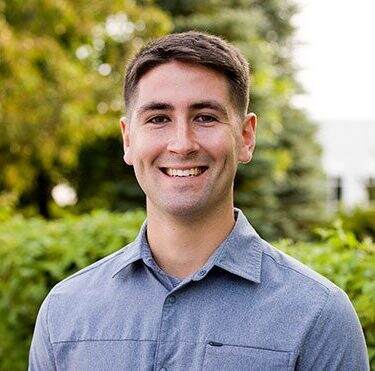RF-induced heating of AIMDs
Active Implantable Medical Devices
Next month, we will be presenting at the National Institutes of Health (NIH) as part of the ISMRM Workshop on MRI of Neuromodulation: Target Engagement, Neural Mechanism & Biomarker Development. Our presentation, Feasibility of a Simplified Virtual Human Anatomy for Determining RF-Induced Heating of Active Implantable Medical Devices, explains how we may be able to decrease the time it takes to evaluate the radiofrequency (RF)-induced heating of an active implantable medical device (AIMD) seeking MRI safety labeling. In case you are unable to attend the Workshop, our presentation is summarized below.
RF-induced heating of AIMDs with long metallic leads is challenging to evaluate. The electric field from the RF coil of an MRI scanner can interact with the entire length of a lead wire, and is highly dependent on the path of the lead wire. It is computationally challenging to model the full geometric fidelity of lead wires, therefore a combined approach of physical measurements with computational modeling and simulation (CM&S) is used to determine in-vivo RF-induced heating of AIMDs with long metallic lead wires (i.e., ISO/TS 10974 Clause 8, Tier 3).
This combined approach of physical and CM&S measurements incorporates four main steps:
- Development of an electromagnetic model (electric field transfer function) of the AIMD with lead wire using measurements in a laboratory setting.
- Validation of the electromagnetic model through comparison of in-vitro measured temperature rises of various lead wire pathways with temperature rises calculated using the electromagnetic model from Step 1 in combination with the simulated background electric field (magnitude and phase) along the lead wire pathways.
- Determination of the background electric field (magnitude and phase) along clinically relevant lead wire pathways through CM&S using a virtual human anatomy (in-vivo). This is dependent on the location of the virtual human anatomy within the MRI scanner.
- Calculation of in-vivo RF-induced temperature rise using the electric field values from Step 3 with the validated electromagnetic model.
Step 3 can be time consuming and computationally expensive once you consider the number of simulations needed to evaluate clinically relevant lead pathways in the virtual human at several locations within the MRI scanner. Our team explored the feasibility of using a simplified virtual human anatomy to decrease the timeframe needed to evaluate the RF-induced heating of AIMDs.
We defined a lead wire pathway for a spinal cord neuromodulation device (i.e., an AIMD) in the Duke virtual human anatomy (a) with all of its internal organs and (b) without internal organs. The fully featured and simplified anatomies were simulated in a 1.5 T/64 MHz MRI scanner to determine the magnitude and phase of the background electric field along the lead wire pathway, which was then used to calculate in-vivo temperature rise using a validated electromagnetic model.

 The AIMD lead pathway resulted in temperature rises of 15.8°C and 17.3°C in Duke with and without internal organs, respectively. The similarity in patterns of their electric field plots and resulting temperature rises indicates that the simplified virtual human anatomy can be used to accurately predict the temperature rise of an AIMD. This suggests that the simplified virtual human anatomy could be used as a lower-fidelity approach for preliminary results, followed by fully featured anatomy simulations of the lead wire pathways/human locations that resulted in the highest temperature rises.
The AIMD lead pathway resulted in temperature rises of 15.8°C and 17.3°C in Duke with and without internal organs, respectively. The similarity in patterns of their electric field plots and resulting temperature rises indicates that the simplified virtual human anatomy can be used to accurately predict the temperature rise of an AIMD. This suggests that the simplified virtual human anatomy could be used as a lower-fidelity approach for preliminary results, followed by fully featured anatomy simulations of the lead wire pathways/human locations that resulted in the highest temperature rises.
For more information about how we can help evaluate your active implantable medical device, please contact us today 855.463.1633 | askmed@medinstitute.com | medinstitute.com.
Get email about news, services, and events from MED Institute.
OUR COMMITMENT
We are committed to consistently performing services with high quality, that deliver exceptional results, and add value to the client’s business.
For client surveys sent in 2024, we received ratings of 4.98/5 points (13).

